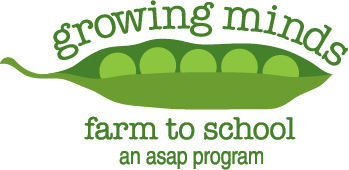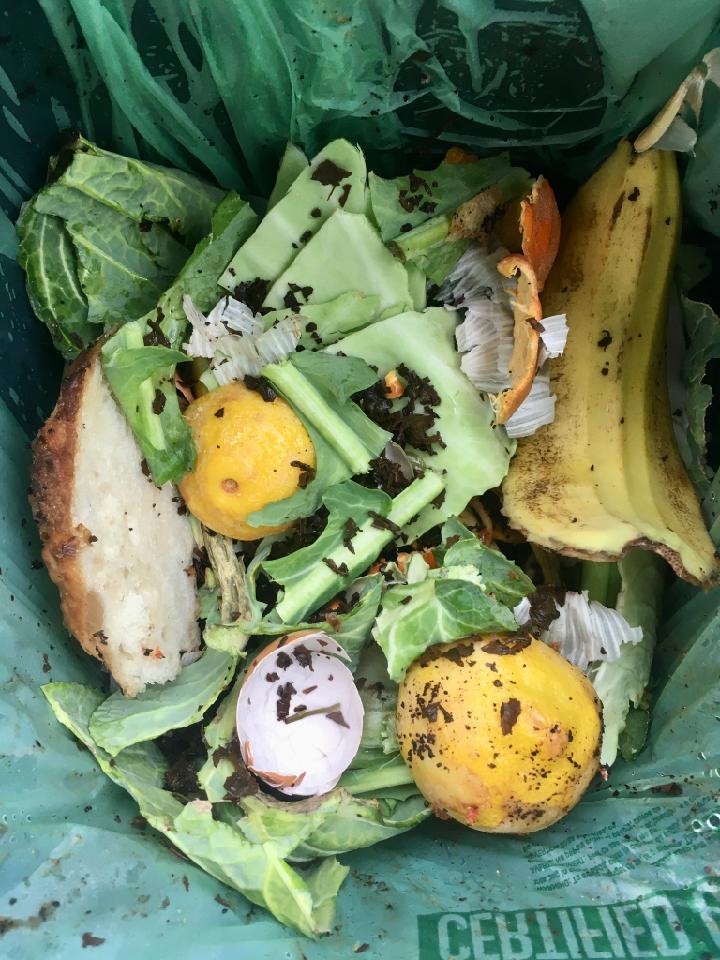This week’s theme is food waste. Our “Growing Minds Day by Day” educational resource lists are designed for families and educators.
Books:

Compost Stew
by Mary McKenna Siddals
This delightful read will inform young “environmental chefs” about the do’s and don’ts of composting. The author draws readers in by mentioning familiar household items that can be composted, but also introduces some not-so-familiar composting substances that will leave students wanting to dig deeper (both figuratively and literally)! Watch a read aloud (and a mini-lesson in backyard composting) by the Audubon Naturalist Society.
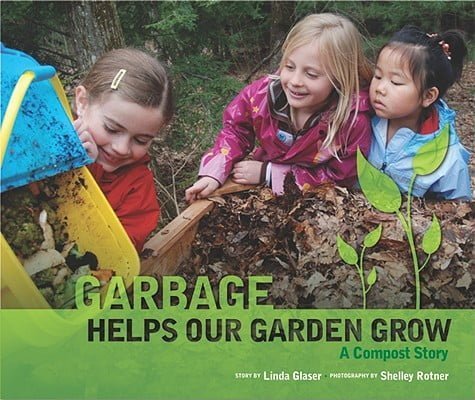
Garbage Helps our Garden Grow: A Compost Story
by Linda Glaser
Illustrated with vibrant photographs, this story explains how food and garden scraps break down into compost. Follow along as a family composts their table scraps (even their old Jack-o-lantern!) in the backyard bin, eventually using the resulting compost to enrich the soil for the spring garden. Watch a read aloud on YouTube.
Find more books
Educators in the Asheville area can check out the books featured above from our lending library. Browse our full collection of recommend farm to school children’s literature, cookbooks, and curriculum here.
Local Food Recipe:

Our easy recipe for Kale and Potato Soup features local kale, but you could also substitute another hearty green you had on hand, such as spinach or chard. Greens are available at farmers markets in late winter and early spring. For added fun, follow the instructions in the “Activities” section below to make homemade vegetable stock for your soup. Are kids helping prepare the soup? You can track their culinary achievements using our Kids Cooking Bingo card.
Educational Resources:
Did you know that food is the biggest single source of waste in the US? Almost 20% of the garbage that ends up in landfills is food. That means that wasted food is taking up a lot of space! To make matters worse, when food is sealed into landfills and begins to decompose, it produces methane, a potent greenhouse gas that contributes to climate change. Landfills are actually the third-largest source of human-related methane emissions.
The good news is, the food waste we produce in our homes (and even in our businesses and schools) doesn’t have to end up in a landfill. Instead, it can be transformed into a valuable natural resource–compost! While kids are usually familiar with the Three R’s–reduce, reuse, recycle–they may be less familiar with composting. Composting is a great way to achieve all three “R’s”. It reduces the amount of waste going to landfills, reuses something that would otherwise be considered trash, and recycles that trash into something new and useful.
In a compost bin or pile, people create the ideal conditions for food waste to be decomposed (broken down) by worms, fungi, and microorganisms. Air and water are also important ingredients in a healthy compost bin. Through composting, food scraps are transformed into organic fertilizer (nutrients) that can be added to garden beds and eventually taken up by the roots of plants.
- Find more tips for reducing food waste on the EPA website
- Learn more about why we should we care about food waste on the USDA website
- Get backyard composting tips from the City of Asheville
Growing Minds Lesson Plans
- Worm Exploration: children will explore life cycles by learning about worms and the ways they benefit the garden and farms. Through reading literature and completing hands-on activities, children will conduct a worm investigation and observe that the organisms (and other animals) need food, air, and space to grow.
- Soil Exploration: children will learn about the properties of soil and why soil is important to plants. They will closely observe soil and practice tallying and reporting results of soil experiments.
- Soil Amendments: Students learn about the benefits of soil amendments and spend time recording their garden observations.
- Soil Jeopardy: Students use books and handouts to create game show questions about soils and then form teams and play the game.
Activities:
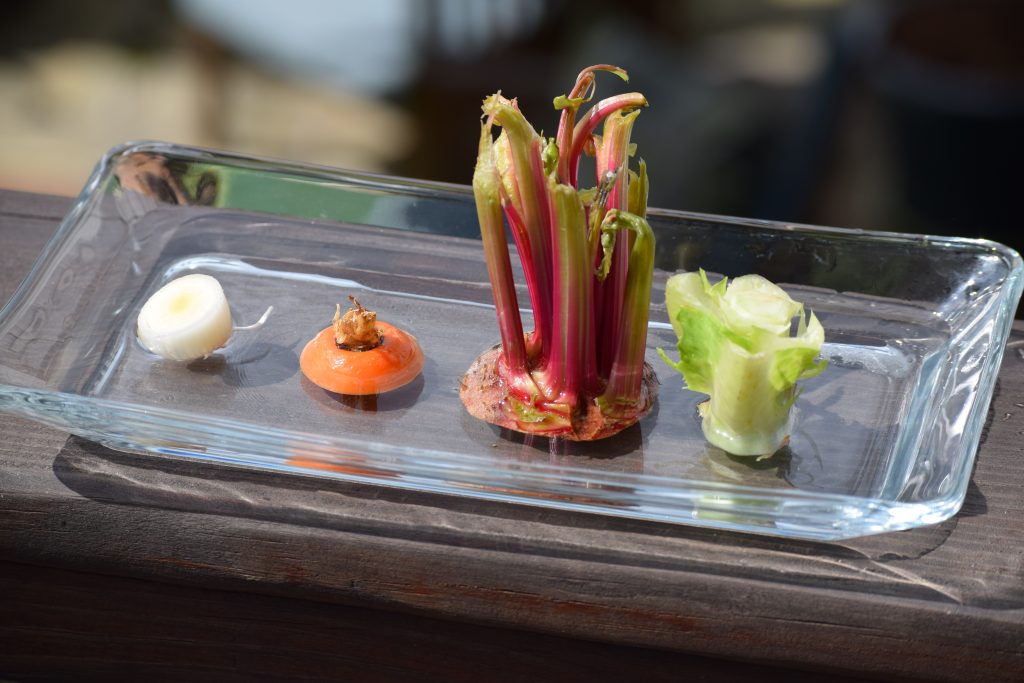
Regrow Your Food Scraps
Did you know you can re-grow some vegetables from food scraps right in your own kitchen? This is a great way to teach your kids about growing food and reusing things to make less waste. Scallions, head lettuce, and celery are good starter scraps to get your little one’s attention right away. Simply place the root ends of the scraps in water, change out the water every other day, and keep in sunlight if possible. You will see small celery stalks and whole ready-to-eat scallions begin to grow within days. Root veggies won’t grow new roots, but their edible tops should sprout. Carrots tops can be added to pesto, while beet, turnip, and radish leaves can be sauteed or added to salads.
Once you and your child are certified experts at growing scallions, move on to bigger and more challenging projects. Plant the scallion, lettuce, and celery sprouts into small pots of soil to see full growth. Sprout onions, sweet potatoes, ginger, garlic, lemongrass, or even an avocado seed. This activity will show your child how easy, rewarding, and fun gardening can be, as well as teach them about waste management and being resourceful.
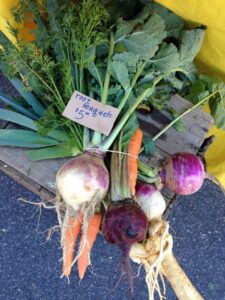
Make Homemade Vegetable Stock
Making vegetable stock is a great way to re-purpose the vegetable peels, tops, and bottoms you would normally discard. Place a container with a lid in your freezer and add your vegetable scraps to it whenever you cook with fresh produce. Carrot and potato peels, onion skins and ends, ribs of greens like kale or collards, parsley or mushroom stems, outer cabbage leaves, corn cobs, apple cores, and other scraps are good choices, but feel free to experiment. Once your container is full, place the food scraps in a large stockpot and cover them with salted water. You may choose to add in a few additional ingredients for seasonings, such as bay leaves, garlic cloves, herbs, or bones. (For added flavor, you can roast or saute your veggies in a little olive oil before boiling them.) Bring the water to a boil, then reduce heat and simmer uncovered for 30 minutes. Strain out the cooked veggie scraps and compost them if you can. Add salt and pepper to the stock to taste. Stock can be frozen, or used right away as the base for homemade soup or stew.
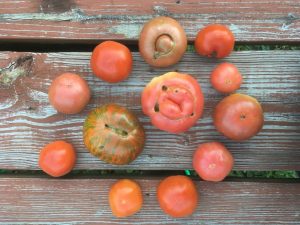
Hold an Ugly Produce Taste Test!
Did you ever wonder why all of the produce at the grocery store is the same shape and size? Grocery stores often require produce to meet certain size, shape, and color specifications so that the produce on the shelves is uniform and visually appealing. If you’ve ever grown a garden though, you know that produce can grow into many unusual shapes! When farmers harvest their crops for grocery stores, they sometimes leave these “ugly” fruits and veggies behind, even though they taste the same. To celebrate these unusually shaped fruits and veggies, hold an ugly produce taste test. Harvest some lumpy, bumpy, tiny, or oddly shaped produce from the garden, then do a side-by-side taste comparison with a “normal” fruit or veggie of the same variety. Can you taste a difference?
Dye Eggs Naturally
Follow these simple instructions from the Kitchn to dye hard-boiled eggs naturally using food scraps and other plant materials, like onion skins, purple cabbage leaves, beets, or turmeric. The basic recipe for making natural dye is to boil chopped produce in water, then steep it until the water achieves the desired hue. Strain out the boiled veggie scraps and add them to your compost bin. Add white vinegar to the strained liquid (1 Tbsp. per cup of dye) as a fixative before dipping eggs.
Build a Worm Bin:
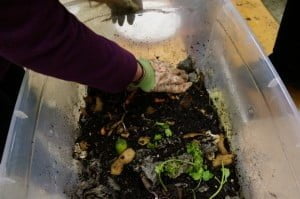
Vermicomposting uses worms (typically red wiggler worms) to break down waste (like vegetable peels, eggshells, coffee grounds, and shredded newspaper) into nutrient-rich organic material. As worms digest food scraps they create a valuable material called worm castings (aka worm poop!). Worm castings can be sprinkled in houseplant pots or out in the garden to fertilize your plants organically. Find more of our favorite worm-themed resources here.
Once constructed, kids can be in charge of feeding fruit and veggie scraps to their “pet” worms once a week and monitoring the progress of decomposition. Kids can record their observations of the worm bin in a journal. Older kids may enjoy learning more about the benefits of vermicomposting by watching this TED-Ed video lesson.
Visit the Environmental Protection Agency’s website to find steps for creating and maintaining your own simple indoor worm bin, which can be stored in the basement or garage.
This is the final post in our Growing Minds Day by Day series. Explore our complete archive of weekly farm to school-themed resource lists here.
